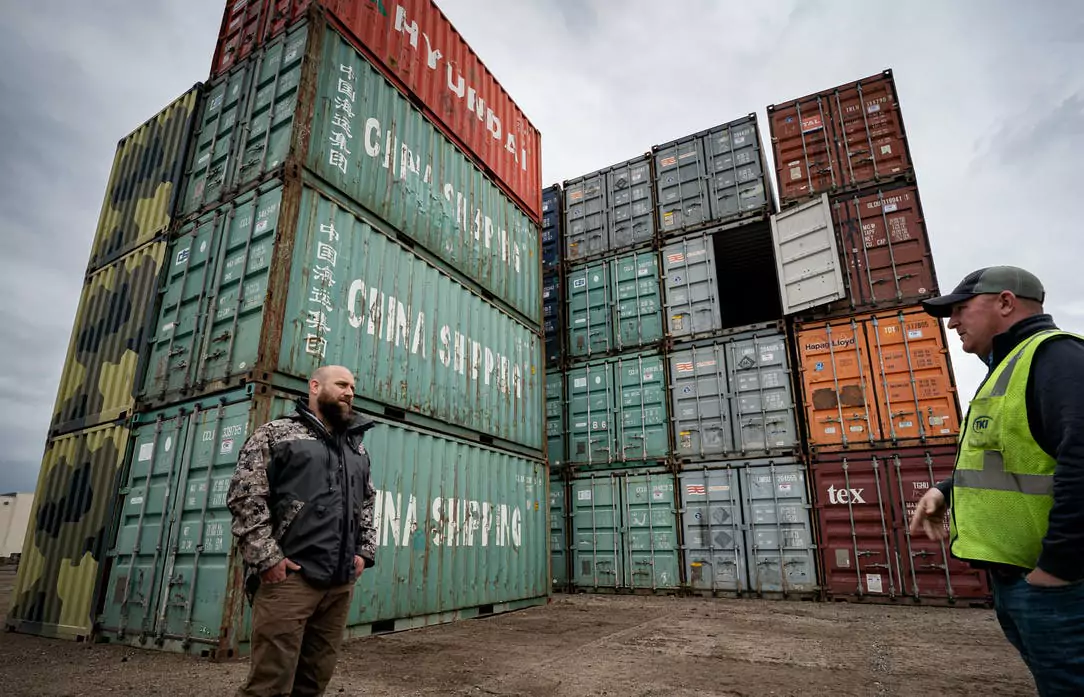A shipping container is basically a shipping container with maximum strength suited to handle, storage, and shipping. Shipping containers range in size from large, reusable steel crates used for intermodal shipping to the standard, corrugated shipping boxes. The containers are designed to be robust enough to carry heavy loads, but easy enough for shippers and manufacturers to customize their own specifications.

With shipping containers, shipping companies and individual shippers can safely store and ship goods over long distances without worrying about damage, pests, or even natural disasters. Shipping containers provide many advantages, most especially when it comes to storing and shipping goods. These types of containers allow shippers and manufacturers to easily transport goods over short distances. Even within a given city, there may be multiple shipping containers available to securely store and ship goods. And because they come in various shapes and sizes, companies and individual shippers can utilize shipping containers to meet specific transportation needs.
There are several types of shipping containers currently on the market. Some of these types are used for single-way trucking, which can carry goods one way and transport them another. These are the largest and most versatile shipping containers, while small lightweight portable units that are used to transport household goods are also available. But the most popular shipping container among shippers is the standard shipping container, which is made of metal and can securely store and ship goods.
The standard shipping container is built to accommodate up to 20 tons (20 metric tons), although the weight limit typically depends on the shipping provider. Shipping containers are designed to be sturdy and secure, allowing shippers to get their cargo to their destination port without delays. While the container itself protects the goods inside from elements, extra layers of protective coating on the outside are often applied to these containers to make them even more weatherproof and stable. As a result, a shipping container is often filled with extra padding and additional safety features that ensure the safe storage of goods.
Shipping containers are commonly rented to make the move easier. Instead of hauling large, bulky loads, shipping containers can be used to carry goods in smaller loads, allowing a company to save fuel. Furthermore, the storage costs for transporting goods this way are much lower than the costs of storing goods at sea or on inland trucks. It is also much easier to handle freight containers as opposed to other shipping options, because they can be stacked into a corner of a parking space or on a narrow platform at the back of a truck. This convenience allows shippers to transport goods in more flexible ways.
Standard shipping containers are constructed from aluminum, which makes them strong and durable, but they are not as attractive as other types of shipping containers. Many companies prefer not to purchase shipping containers with cartoon characters or designs because these containers can take on an embarrassed appearance if they are not enclosed properly. Fortunately, most shippers are aware of this issue and will therefore pay extra for a container that has been designed specifically for shipping goods. Regardless of the type of container being used, standard shipping containers are available in a wide range of colors, sizes, and shapes.
When considering a shipping container, it is important to consider what features are important to you. Most companies choose a standard container in order to save time and money. Standard containers may be used for general purposes, including storing inventory, temporarily storing excess stock, and shipping fragile goods. For goods that will be handled frequently, many customers choose a locking container, which can offer peace of mind and increased security. Moreover, standard containers are available with many customizable features. Some companies add locks, shelving units, racks and hooks, while others add a bottom panel that provides support for oversized pallets.
When choosing shipping containers for a company’s shipping needs, it is important to consider both the size and cost of shipping containers. For example, the height of a shipping container can impact how quickly it is able to move a load. Additionally, different types of containers have different locking options. Many locking options are provided on standard shipping containers, which allow a company to add their own locking device. Furthermore, many standard shipping containers are available in both self-contained and enclosed varieties. Enclosed varieties are better suited for companies that ship goods that require additional packing material and have a lower cost than self-contained containers.
